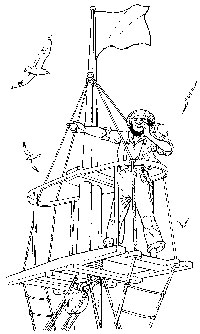F R O M T H E C R O W E ’ S N E S T
The Fishery We Have

The June international lobster conference in Portland highlighted specific topics related to lobster internationally and in Maine. Foremost takeaway was that the Maine lobster industry might never have needed science more than it does now. The changes in the fishery over the last 25 years are well known to fishermen and the last five years have been a wake-up call to many. In particular, the start of the lobster molt has gone from a predictable range of a few days to an unpredictable range over several months.
The shifting of environmental baselines attributed to global warming is driving the re-evaluation of conclusions drawn from earlier data to construct new assessment strategies. The lobster larvae settlement index developed in 1989 at the Darling Marine Center, has provided a seven-year advance view of lobster populations. Higher water temperatures have increased the depth where temperatures are acceptable to lobster larvae. The current index data show fewer larvae, but samples from the now deeper acceptable temperature could reveal significantly larger settlement index numbers.
Higher water temperatures and ocean acidity in the Gulf of Maine are having behavioral effects on other marine life. It isn’t yet known which or all the effects, but without scientific examination the future of lobster fishing and marine life in general in the GOM could be beyond unpredictable.
The data fishermen have collected and passed on to subsequent generations is meeting with environmental influences unimaginable to our grandparents and parents. That changed environment doesn’t negate this traditional knowledge. It remains a valuable baseline. Traditional fisheries knowledge, collaborative research and sound, unbiased scientific analysis can help chart a course through the current shifting marine environment.
As the predicted expansion of a range of aquacultural uses unfolds in Maine, unknowns and unexpected consequences are probable. At the ICWL, Ole Samuelson, Institute of Marine Research, Norway, presented data on the molt cycles of sea lice and lobster larvae and the near identical effects on both from pesticide use in salmon pens. The controlled conditions some aquaculture demands, such as monoculture, fixed gear, predator exclusion, disease control and long-term leases, could result in changes to an already stressed marine environment. Engaging marine science in the assessment of potential threats to a changing marine environment will be essential to preserving the fishery resources we already have.
